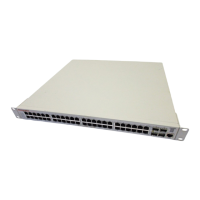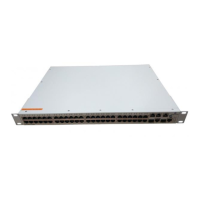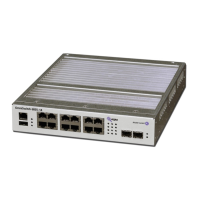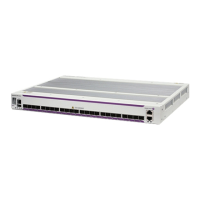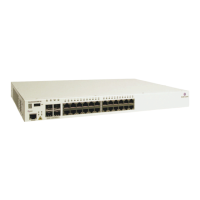Configuring IP Multicast Switching IPMS Overview
OmniSwitch AOS Release 8 Network Configuration Guide December 2017 page 25-6
PIM
Protocol-Independent Multicast (PIM) is an IP multicast routing protocol that uses routing information
provided by unicast routing protocols, such as RIP and OSPF. Sparse Mode PIM (PIM-SM) contrasts with
flood-and-prune dense mode multicast protocols, such as DVMRP and PIM Dense Mode (PIM-DM), in
that multicast forwarding in PIM-SM is initiated only through specific requests. Downstream routers must
explicitly join PIM-SM distribution trees in order to receive multicast streams on behalf of directly-
connected receivers or other downstream PIM-SM routers. This paradigm of receiver-initiated forwarding
makes PIM-SM ideal for network environments where receiver groups are thinly populated and bandwidth
conservation is a concern, such as in Wide Area Networks (WANs). PIM-DM packets are transmitted on
the same socket as PIM-SM packets as both use the same protocol and message format. Unlike PIM-SM,
in PIM-DM there are no periodic joins transmitted; only explicitly triggered prunes and grafts. In PIM-
DM, unlike PIM-SM, there is no Rendezvous Point (RP).
DVMRP
Distance Vector Multicast Routing Protocol (DVMRP) is a distributed multicast routing protocol that
dynamically generates per-source delivery trees based upon routing exchanges. When a multicast source
begins to transmit, the multicast data is flooded down the delivery tree to all points in the network.
DVMRP then prunes (i.e., removes branches from) the delivery tree where the traffic is unwanted. This is
in contrast to PIM-SM, which uses receiver-initiated (i.e., forward path) multicasting.
IGMP Version 3
IGMP is used by IPv4 systems (hosts and routers) to report their IP multicast group memberships to any
neighboring multicast routers. IGMP Version 2 (IGMPv2) handles forwarding by IP multicast destination
address only. IGMP Version 3 (IGMPv3) handles forwarding by source IP address and IP multicast
destination address. All three versions (IGMPv1, IGMPv2, and IGMPv3) are supported.
In IGMPv2, each membership report contains only one multicast group. In IGMPv3, membership reports
contain many multicast groups up to the Maximum Transmission Unit (MTU) size of the interface.
IGMPv3 uses source filtering and reports multicast memberships to neighboring routers by sending
membership reports. IGMPv3 also supports Source Specific Multicast (SSM) by allowing hosts to report
interest in receiving packets only from specific source addresses or from all but specific source addresses.
Note. See “Configuring the IGMP Version” on page 25-12 for information on configuring the IGMP
version.

